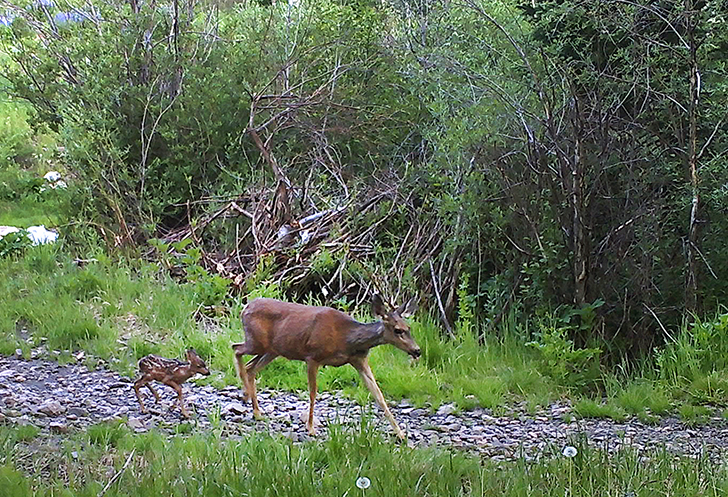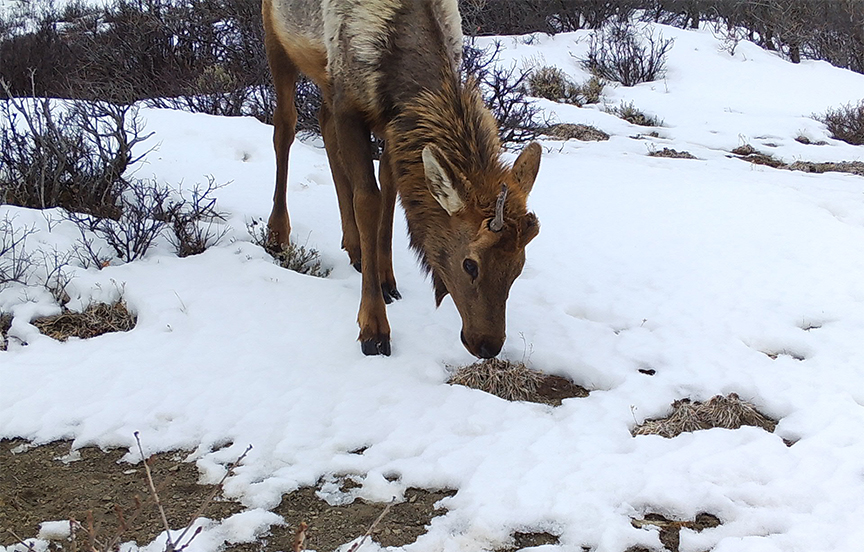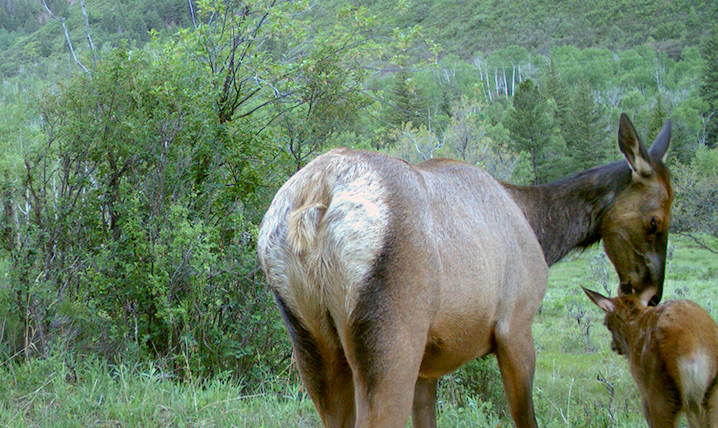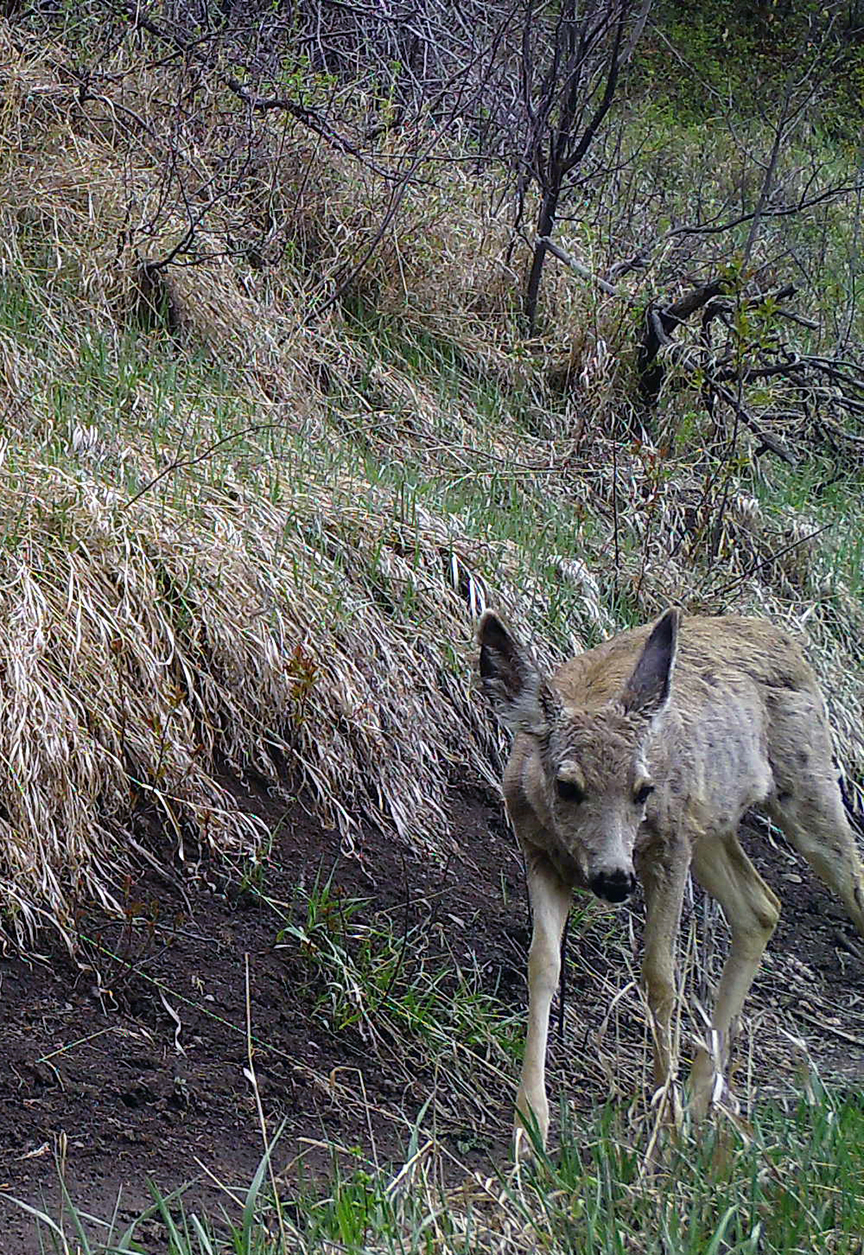Spring is life-or-death time for some animals
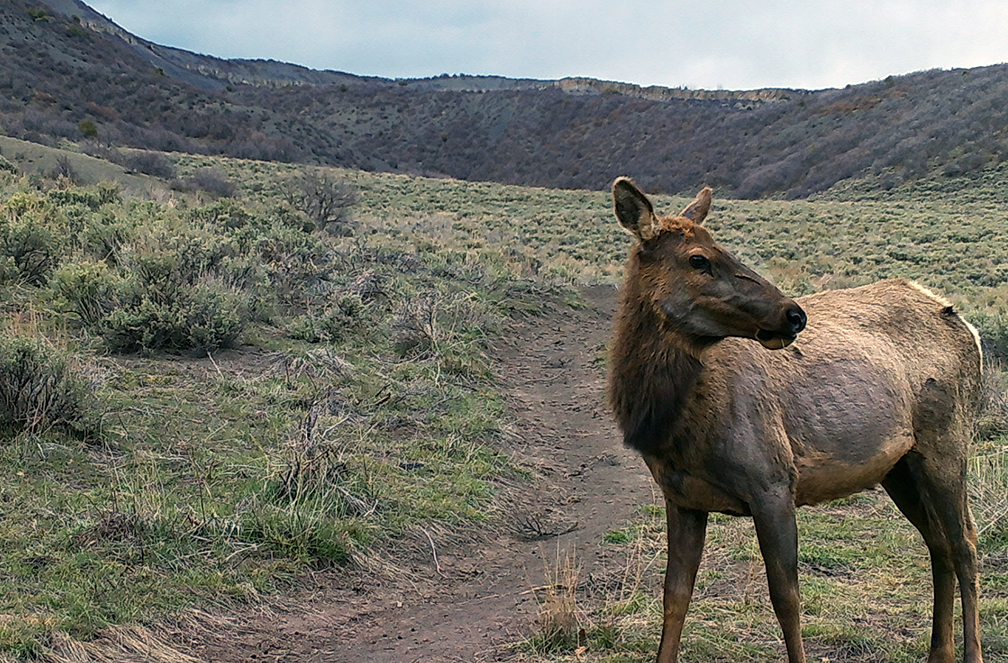
An elk’s ribs are visible by spring at Sky Mountain Park.
Springtime in the Rockies is irresistible. A balmy afternoon is impetus enough to pump up bike tires, assemble a fishing rod or dig hiking boots from the back of the closet. The stomping grounds of our summer passions are calling. Don’t answer.
Many local trails will remain closed for another month or more, and for good reason. It’s a matter of life and death. Winter wildlife closures extend into spring in order to give herbivores a chance to recover from winter’s starvation diet. On top of that, females are pregnant.
“It’s pretty much all of our ungulate species – moose, elk, deer, sheep – you name it,” said Matt Yamashita, area wildlife manager for Colorado Parks and Wildlife. “In winter, they’re feeding on dead plant material. They’re not getting nutrients, they’re just trying to slow down the starvation process.”
In their heavy winter coats, these animals may look healthy; come spring, when they shed that extra hair, they’re emaciated, Yamashita noted. Photos taken of elk and deer by Open Space and Trails wildlife cameras in closed areas often confirm this malnourished state.
“It’s not always a pretty thing for us as humans to observe,” Yamashita said.
“Winter kill” is a misnomer, he added. It’s May and June when CPW wildlife officers see the hardship of winter catch up with the animals that are unable to pull themselves back from the brink.
“Spring is a critical juncture. If they don’t have the opportunity to feed and replenish those reserves, they’ll perish,” Yamashita said.
By ignoring seasonal closures, humans unwittingly create unnecessary hardship for animals. Dogs running off leash, off-road vehicles and other human activities cause stress to wildlife, though it may not be obvious to an observer.
“Every time they raise their head, that’s a gross loss in the production of nutrients for that body,” Yamashita said. If the animal is compelled to stand up and move away, it’s burning calories unnecessarily. Even if it holds still, its heart rate increases in the presence of a human or dog that is too close.
While spring offers the opportunity to observe elk gathering to feed, it’s important to watch from a distance. Use binoculars. Take photos with a long camera lens. If animals pick their heads up to look at you, appear nervous or start to move away, you’re too close. A resting animal should never have to get up and move in response to a human or dog.
While elk are the oft-cited reason for wildlife closures, they are hardly the only species that needs space. Deer, moose and bighorn sheep are also making up for winter’s sparse browse. Hungry black bears have emerged from hibernation; sows often have new cubs in tow.
Respect wildlife closures
On many Pitkin County open space properties, winter closures remain in effect into May or even June to give animals time to recover as food sources re-emerge. Elk herds gathered in the open meadows at the base of Sky Mountain Park are a common sight in springtime.
The Forest Service’s springtime closures in the Burnt Mountain area near Snowmass Village are intended to protect elk calving areas. And, critical winter habitat for elk and bighorn sheep surrounds Avalanche Creek Road, where a dog closure remains in effect until early May.
Please respect all wildlife closures. Find the opening dates for various trails and properties below.
Leave young wildlife alone
Between now and the end of June, critters of all types will have their young. Observing leash laws and dog prohibitions becomes all the more important.
If you happen upon a baby animal or bird, leave it alone. It’s unlikely that it needs rescuing. Newly fledged birds commonly hang out on the ground below the nest while they figure out how to fly. They have not been “abandoned.” And, it’s normal for adult animals such as elk and deer to leave their young in a safe place while they go forage for food.
“Baby mammals are scentless in order to prevent predators from finding them,” said Janet George, senior terrestrial biologist for Colorado Parks and Wildlife, on the agency’s website. “When humans touch these animals, they are imparting them with a scent their adult parents will not recognize. This can result in true abandonment of healthy offspring.”
If a newborn appears to have been left alone for 24 hours, then it is time to notify Colorado Parks and Wildlife. Please don’t handle the animal yourself.
OPENING DATES
BRUSH CREEK TRAIL – Reopened to human use on April 1. Reopens to leashed dogs on May 16.
RIO GRANDE TRAIL – Closed section between Rock Bottom Ranch and Catherine Bridge reopens April 30 at 5 p.m. (this section closed to dogs year-round). One-mile stretch of trail in lower Snowmass Canyon closed to dogs in winter; reopens to leashed dogs on May 1.
ASPEN VALLEY RANCH – Trail access reopens May 1. Dogs must be leashed.
AVALANCHE CREEK ROAD – Forest Service Road 310 (Avalanche Creek Road) and surrounding area closed to dogs until May 2. Area north of road closed to people until May 2. Road closed to vehicles and bicycles through May 21.
BIONEZ GULCH – Access from Lazy Glen Open Space/Rio Grande Trail reopens May 1. No dogs or bikes allowed in Gulch.
BURNT MOUNTAIN TRAILS-SNOWMASS (Tom Blake Trail, Sequel Trail and other trails in the Elk Camp and Two Creeks vicinity) – Closed April 25-June 20 (reopen June 21). ANAEROBIC NIGHTMARE (and surrounding area) closed April 25-June 27 (reopens June 28).
CONGO TRAIL PARKING AREA – Reopens Memorial Day weekend.
GLASSIER OPEN SPACE TRAILS – Reopen May 1. No dogs or motorized uses permitted. Closed to use from dusk to dawn.
GOVERNMENT TRAIL/SUGAR BOWL TRAIL (AND SURROUNDING AREA) – Closed May 15-June 27 (reopens June 28). Dogs must be leashed when open to use.
FILOHA MEADOWS NATURE PRESERVE – Closed Oct. 1 through June 30 (reopens July 1). Public access limited to north-south wagon road through property. No dogs. No bikes.
JANEWAY – Access to Janeway through Tarr property (an Open Space and Trails access) reopens May 2.
PERHAM CREEK TRAILHEAD – Reopened April 1.
RED WIND POINT OPEN SPACE – Reopens May 1.
RIM TRAIL NORTH – Reopens May 16. Closed to motorized uses. Dogs must be leashed. Closed from dusk to dawn.
SKY MOUNTAIN PARK TRAILS (Seven Star Trail, Viewline, Cozyline, Cozy Pony, Airline, Deadline, Skyline Ridge, Ditchline) – Reopen May 16. All of the listed Sky Mountain Park trails are closed to dogs. Seven Star, Deadline, Cozyline and Airline trails are closed to horses. Deadline also closed to pedestrians. All single-track closed to motorized uses, including e-bikes. Sky Mountain Park closed to use from dusk to dawn.
WHEATLEY GULCH – Access via Wheatley Open Space reopens May 1. No dogs, bikes or motorized uses permitted in Gulch.
KEY LINKS
CPW Video: Leave wildlife alone (please)!
When it’s time to leave Burnt Mountain alone (Pitkin County OST, March/April 2021)
Recreate responsibly in Avalanche Creek (Pitkin County OST, March 2021)
Wildlives Colorado – How to respectfully and safely interact with wildlife
– By Pitkin County Open Space and Trails
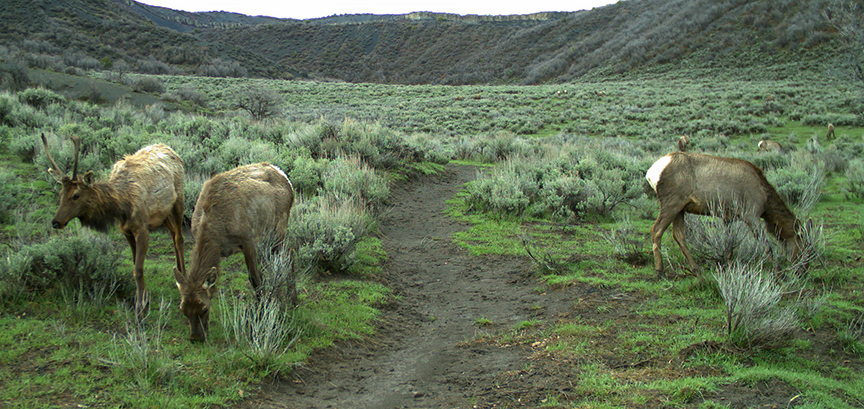
Elk feed on the greening landscape next to Seven Star Trail in April 2021.
- A deer and her fawn on Burnt Mountain.
- Dead grass – not much of a meal.
- New life at Filoha Meadows.
- A gaunt mule deer.
